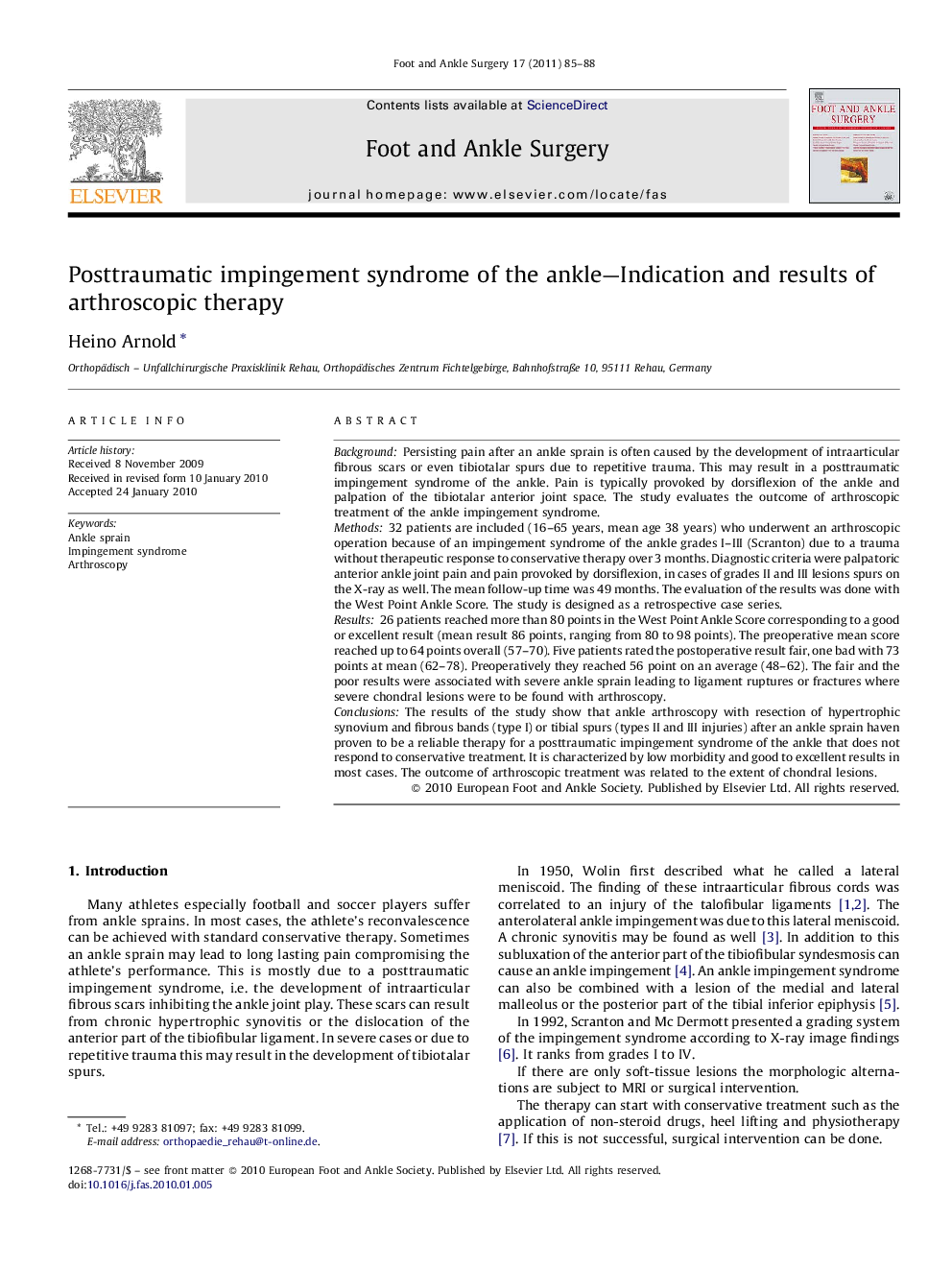| Article ID | Journal | Published Year | Pages | File Type |
|---|---|---|---|---|
| 4054807 | Foot and Ankle Surgery | 2011 | 4 Pages |
BackgroundPersisting pain after an ankle sprain is often caused by the development of intraarticular fibrous scars or even tibiotalar spurs due to repetitive trauma. This may result in a posttraumatic impingement syndrome of the ankle. Pain is typically provoked by dorsiflexion of the ankle and palpation of the tibiotalar anterior joint space. The study evaluates the outcome of arthroscopic treatment of the ankle impingement syndrome.Methods32 patients are included (16–65 years, mean age 38 years) who underwent an arthroscopic operation because of an impingement syndrome of the ankle grades I–III (Scranton) due to a trauma without therapeutic response to conservative therapy over 3 months. Diagnostic criteria were palpatoric anterior ankle joint pain and pain provoked by dorsiflexion, in cases of grades II and III lesions spurs on the X-ray as well. The mean follow-up time was 49 months. The evaluation of the results was done with the West Point Ankle Score. The study is designed as a retrospective case series.Results26 patients reached more than 80 points in the West Point Ankle Score corresponding to a good or excellent result (mean result 86 points, ranging from 80 to 98 points). The preoperative mean score reached up to 64 points overall (57–70). Five patients rated the postoperative result fair, one bad with 73 points at mean (62–78). Preoperatively they reached 56 point on an average (48–62). The fair and the poor results were associated with severe ankle sprain leading to ligament ruptures or fractures where severe chondral lesions were to be found with arthroscopy.ConclusionsThe results of the study show that ankle arthroscopy with resection of hypertrophic synovium and fibrous bands (type I) or tibial spurs (types II and III injuries) after an ankle sprain haven proven to be a reliable therapy for a posttraumatic impingement syndrome of the ankle that does not respond to conservative treatment. It is characterized by low morbidity and good to excellent results in most cases. The outcome of arthroscopic treatment was related to the extent of chondral lesions.
